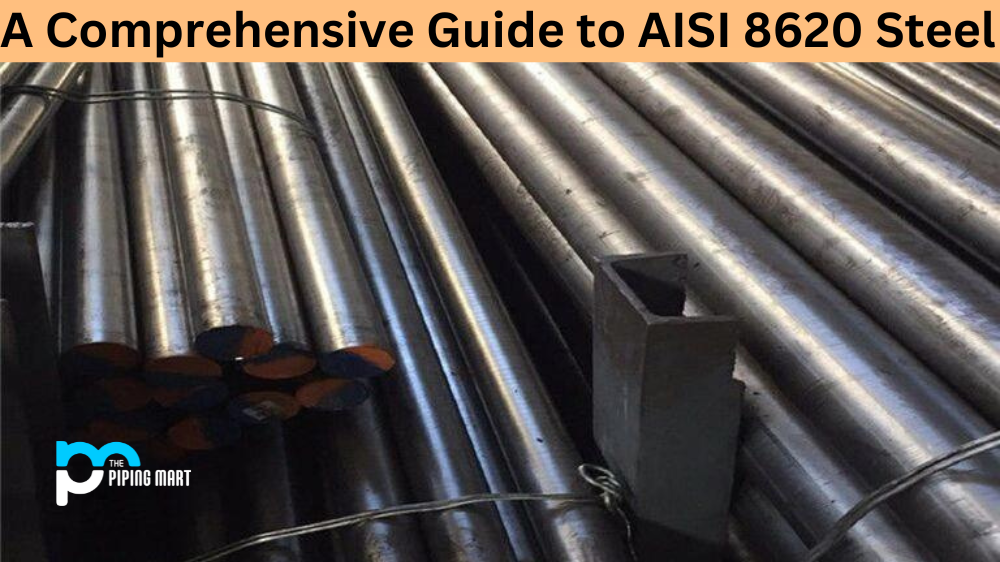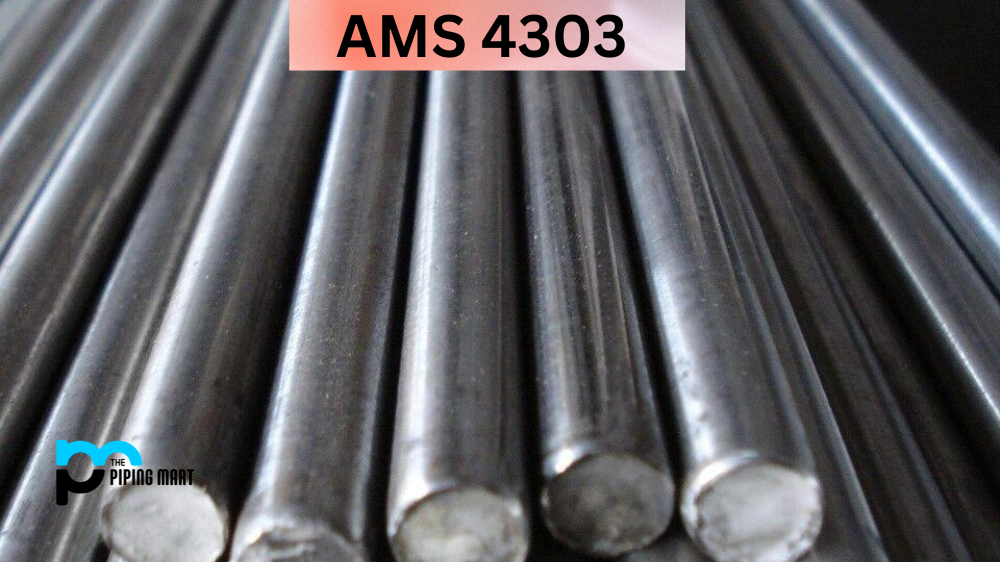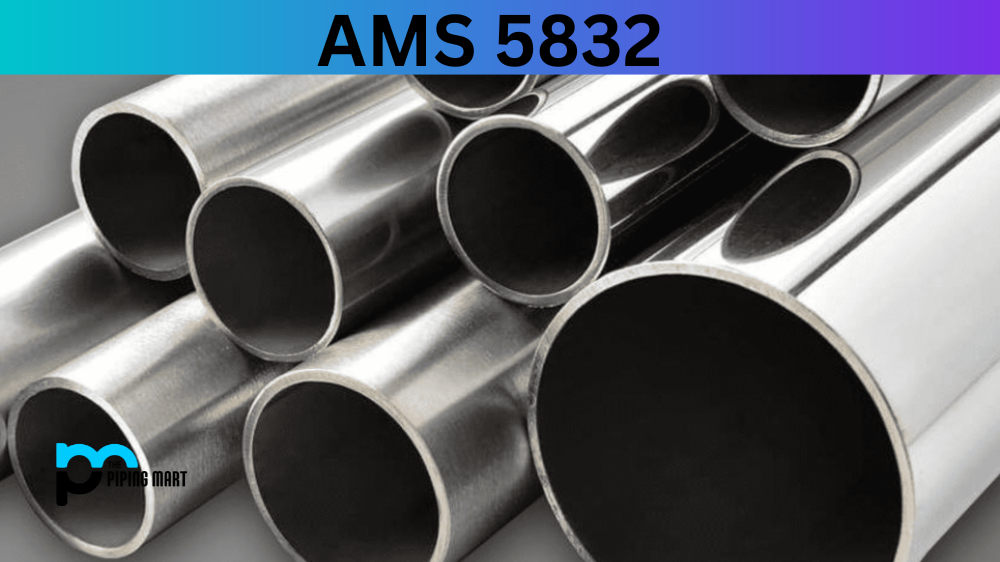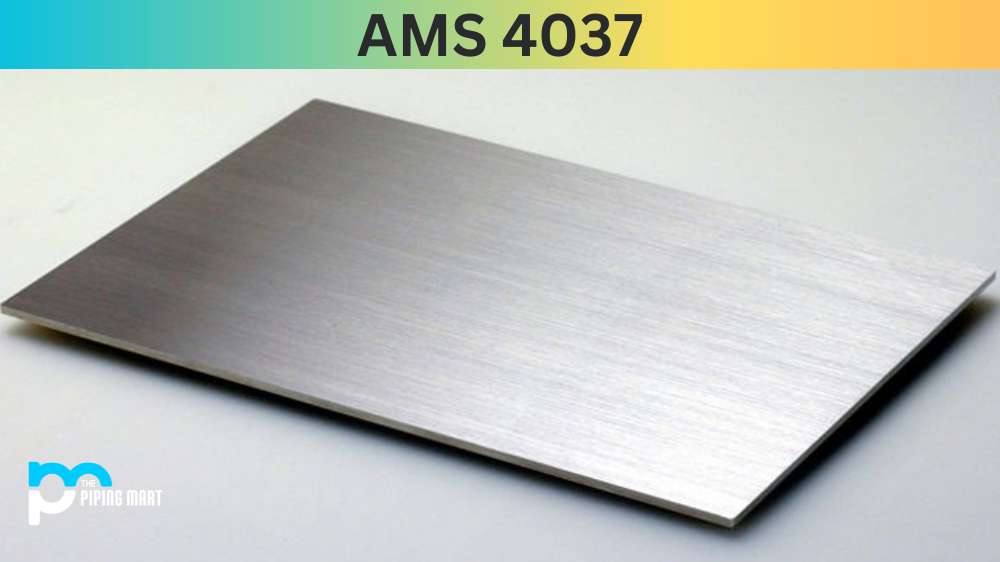AISI 8620 is a popular steel alloy that offers an impressive combination of strength, hardness, and resistance to wear. 8620 Alloy Steel is widely used in the manufacture of components for automobiles, machinery, and defense equipment. AISI 8620 Alloy Steel, also known as UNS G86200, is a versatile steel with excellent strength and durability. With its unique chemical composition, this grade of steel is often used in a range of applications, including the manufacturing of gears, shafts, and axles. This alloy steel is particularly well-suited for heavy-duty machinery and equipment requiring high durability and wear and tear resistance. Moreover, AISI 8620 Steel has impressive properties such as excellent ductility, high tensile strength, and superior hardenability, making it an ideal choice for various industrial applications. Whether you’re looking to bolster your manufacturing processes or improve machinery capabilities, AISI 8620 Alloy Steel offers an unbeatable combination of strength and versatility. In this blog post, we’ll discuss the many uses of UNS G86200 steel and its impressive properties. We’ll also explore how it can be heat-treated and machined for various applications.
What Forms of AISI 8620 is Available at Piping Mart?
- Nut
- Bar
- Bolt
- Pipe
- Screw
- Tubing
- Valves
- Washers
- Flanges
- Fasteners
- Electrodes
- Stud Bolts
- Sheet Plates
- Pipe Fittings
- Forged Fitting
- Instrumentation Fittings
AISI 8620 Chemical Composition
| Element | Content (%) |
|---|---|
| Iron, Fe | 96.895-98.02 |
| Manganese, Mn | 0.700-0.900 |
| Nickel, Ni | 0.400-0.700 |
| Chromium, Cr | 0.400-0.600 |
| Carbon, C | 0.180-0.230 |
| Silicon, Si | 0.150-0.350 |
| Molybdenum, Mo | 0.150-0.250 |
| Sulfur, S | ≤ 0.0400 |
| Phosphorous, P | ≤ 0.0350 |
AISI 8620 Physical Properties
| Properties | Metric | Imperial |
|---|---|---|
| Density | 7.85 g/cm3 | 0.284 lb/in³ |
AISI 8620 Mechanical Properties
| Properties | Metric | Imperial |
|---|---|---|
| Tensile strength | 530 MPa | 76900 psi |
| Yield strength | 385 MPa | 55800 psi |
| Elastic modulus | 190-210 GPa | 27557-30458 ksi |
| Bulk modulus (typical for steel) | 140 GPa | 20300 ksi |
| Shear modulus (typical for steel) | 80 GPa | 11600 ksi |
| Poisson’s ratio | 0.27-0.30 | 0.27-0.30 |
| Izod Impact | 115 J | 84.8 ft.lb |
| Hardness, Brinell | 149 | 149 |
| Hardness, Knoop (converted from Brinell hardness) | 169 | 169 |
| Hardness, Rockwell B (converted from Brinell hardness) | 80 | 80 |
| Hardness, Vickers (converted from Brinell hardness) | 155 | 155 |
| Machinability (hot rolled and cold drawn, based on 100 machinability for AISI 1212 steel) | 65 | 65 |
AISI 8620 Thermal Properties
| Properties | Metric | Imperial |
|---|---|---|
| Thermal conductivity | 46.6 W/mK | 323 BTU in/hr.ft².°F |
AISI 8620 Equivalent
| AISI 8620 | AMS 6274 | AMS 6276 | AMS 6277 | AMS 6375 | ASTM A29 |
| ASTM A322 | ASTM A331 | ASTM A506 | ASTM A507 | ASTM A513 | ASTM A519 |
| ASTM A646 | ASTM A752 | ASTM A829 | MIL S-8690 | SAE J1397 | SAE J404 |
| AFNOR 20 NCD 2 | AFNOR 22 NCD 2 | DIN 1.6523 | UNI 20 NiCrMo 2 | JIS SNCM 21 | JIS SNCM 21 H |
| B.S. 805 H 20 | B.S. 805 M 20 | AMS 6274G | AMS 6276C | AMS 6277A | ASTM A505 |
| MIL SPEC MIL-S-16974 | SAE J404 | SAE J770 |
AISI 8620 Uses
AISI 8620 steel is most often used for automotive parts, such as gears and shafts. It’s also commonly found in components for agricultural machinery and general engineering applications. Its excellent wear resistance makes it ideal for a range of automotive parts, such as camshafts, drive shafts, transmission cases, differential housing assemblies, axle housings, flywheels, connecting rods, crankshafts, and steering knuckles.
AISI 8620 Uses in Industries
Automotive Industry
AISI 8620 steel is commonly used in the automotive industry for components such as gears, crankshafts, and camshafts. Its high strength and wear resistance make it ideal for these applications. The AISI 8620 can also be easily machined and welded, making it a versatile choice for automotive parts.
Aerospace Industry
The aerospace industry also utilizes AISI 8620 steel to manufacture aircraft components. Its high tensile strength and toughness suit critical parts such as landing gear and engine components. It is also corrosion-resistant, important for aircraft constantly exposed to harsh environments.
Oil and Gas Industry
In the oil and gas industry, AISI 8620 steel is commonly used for drill collars, shafts, and other drilling equipment due to its high strength and ability to withstand extreme temperatures and pressures. Its toughness makes it suitable for downhole tools subjected to heavy loads.
Construction Industry
Due to its high strength and impact resistance, AISI 8620 steel is often used in construction equipment such as cranes, excavators, and bulldozers. It is also commonly used in bridges and buildings where durability is essential.
Manufacturing Industry
Due to its excellent machinability and wear resistance, the manufacturing industry utilizes AISI 8620 steel for various applications, including tooling, machine parts, and gears. It can be heat treated to achieve desired properties for specific manufacturing processes.
AISI 8620 Corrosion Resistance
AISI 8620 alloy offers excellent corrosion resistance thanks to its high chromium content. The steel is able to resist corrosion even when exposed to corrosive environments such as seawater or acid rain. This makes it suitable for use in marine applications or any other application where exposure to corrosive elements is likely. Furthermore, its high chromium content also gives it good oxidation resistance at elevated temperatures up to 650°F (343°C).
AISI 8620 Heat Treatment
AISI 8620 can be heat treated by either quenching or normalizing methods depending on the desired mechanical properties required by the application. Quenching involves heating the steel above its critical temperature before cooling rapidly in oil or water while normalizing involves heating the steel above its critical temperature before cooling slowly in still air. Depending on the method employed and the subsequent tempering process chosen after heat treatment, AISI 8620 can achieve tensile strengths ranging from 545 MPa (79 ksi) up to 795 MPa (115 ksi).
AISI 8620 Machining
AISI 8620 is relatively easy to machine compared with other steels due to its low carbon content combined with additional alloys like molybdenum, reducing cutting forces during machining operations. This makes it ideal for precision parts that require tight tolerances or intricate profiles, such as those used in firearms applications or aircraft components where accuracy is essential. Additionally, its relatively low sulfur content improves machinability by reducing tool wear during cutting operations leading to higher levels of production efficiency and lower costs per part produced.
Conclusion:
AISI 862 0 is one of the most popular steels on the market today due to its impressive combination of strength, hardness, and wear resistance. This versatile alloy can be used across a wide range of applications, including automotive components, agricultural machinery, defense equipment, firearms components, aircraft parts, marine applications, etc. Additionally, it offers excellent corrosion resistance due to its high chromium content while still being relatively easy to machine with minimal tool wear. With proper heat treatment, AISI 862 0 can achieve tensile strengths ranging from 545MPa (79ksi) up to 795MPa (115ksi), making it an ideal choice for precision parts requiring tight tolerances. All things considered, AISI 862 0 is an exceptional steel alloy that can offer outstanding performance for any application.
Meet Heer, a dynamic and driven writer learning tricks of her trade in the metal industry. With a background in Digital Marketing, Heer brings a unique perspective to her writing, sharing valuable insights. Apart from blogging she like reading and hiking.




